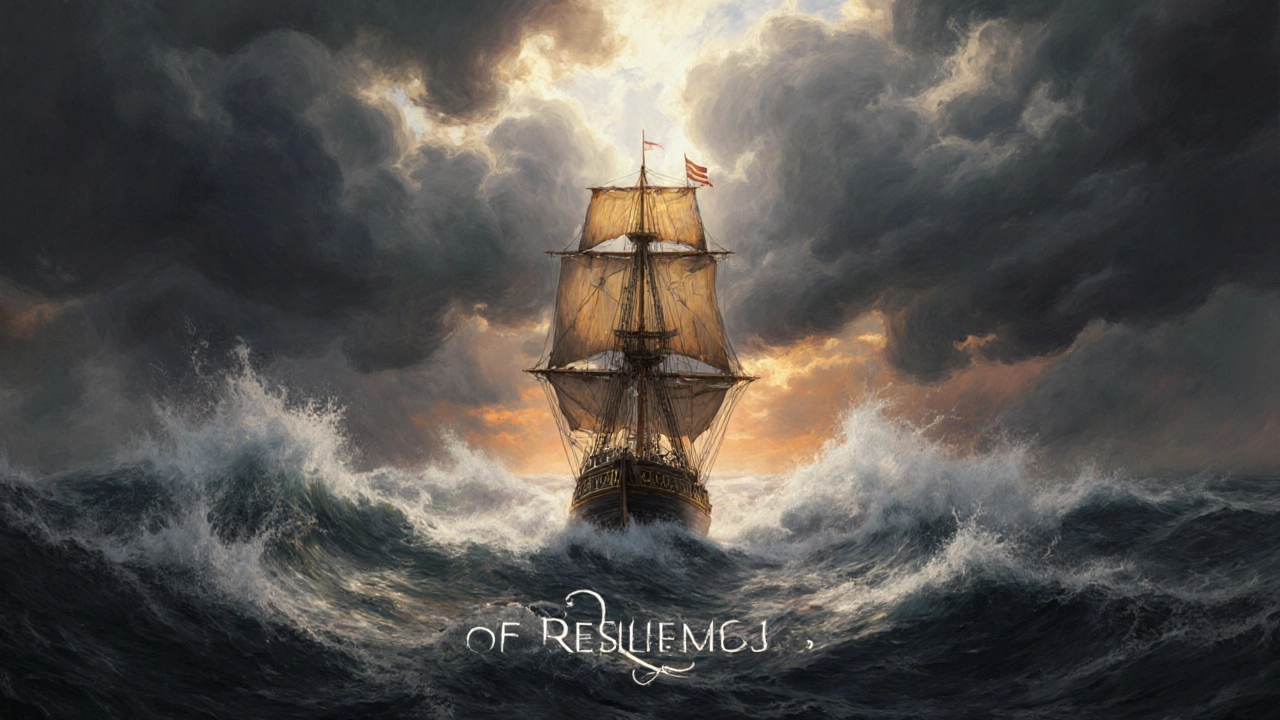Two Powerful Attitude Quotes to Boost Your Mindset
 Oct, 8 2025
Oct, 8 2025
When you need a quick shot of confidence, nothing works faster than a well‑chosen attitude quotes pair. Below you’ll find two punchy lines, why they click, and practical ways to drop them into your day‑to‑day life.
What makes an attitude quote stick?
Attitude quote is a brief statement that reflects a confident, bold, or defiant outlook. Unlike long‑form poetry, it packs meaning into a single sentence, making it ideal for social media captions, journal notes, or a mental pep‑talk before a big meeting.
Three traits give a quote staying power:
- Clarity: The wording is simple enough to remember after a single read.
- Emotion: It taps into feelings of empowerment, rebellion, or self‑belief.
- Relevance: It resonates with everyday challenges-whether you’re facing a tough workout or a demanding deadline.
Because of these traits, an attitude quote becomes a tiny mental tool you can pull out whenever you need a boost.
The first quote - “I’m not afraid of storms, for I’m learning how to sail my ship.”
This line is often attributed to Louisa May Alcott, though the exact wording varies across sources. Let’s break down why it works.
- Visual metaphor: The image of a ship navigating stormy seas instantly conveys challenge and mastery.
- Active agency: The speaker says "I’m learning," which frames difficulty as a learning opportunity rather than a barrier.
- Positive resilience: Fear is removed; the focus shifts to skill‑building.
How to use it:
- Set it as your phone lock‑screen wallpaper - every glance reminds you you’re in control.
- Drop it into a LinkedIn post when sharing a project that faced setbacks.
- Write it in a journal entry before a high‑stakes presentation to anchor confidence.
The second quote - “Your attitude determines your direction.”
Often credited to John C. Maxwell, a leadership guru, this quote is a classic example of motivation distilled into a single line.
Why it clicks:
- Cause‑effect framing: It ties the abstract (attitude) directly to a tangible result (direction).
- Universal applicability: Whether you’re mapping a career path or choosing a workout routine, the principle stands.
- Actionable cue: It nudges you to check your mindset before making decisions.
Ways to embed it in daily habits:
- Print it on a sticky note for your desk and flip it over when you catch a negative thought.
- Use it as a caption for an Instagram photo that shows progress-like a before‑and‑after fitness picture.
- Share it in a group chat when a friend vents about a setback; it offers instant perspective.

Quick comparison of the two quotes
| Quote | Attributed Author | Core Metaphor | Primary Use‑Case |
|---|---|---|---|
| "I’m not afraid of storms, for I’m learning how to sail my ship." | Louisa May Alcott (widely cited) | Storm‑tossed ship | Overcoming fear during major change |
| "Your attitude determines your direction." | John C. Maxwell | Compass‑like direction | Everyday decision‑making, goal‑setting |
Integrating attitude quotes into social media without looking cheesy
Social platforms thrive on short, snappy copy-exactly what an attitude quote offers. Still, you want authenticity. Follow these three rules:
- Pair with personal context: Rather than posting the quote alone, add a line about why it matters today (e.g., "Had a rough client call, but this line keeps me steady").
- Match the visual tone: Use a background image that mirrors the metaphor-stormy sea for the first, a winding road for the second.
- Credit the source: Even if you’re not 100% sure about authorship, adding "- attributed to" shows respect and builds credibility.

Common pitfalls and how to avoid them
Using attitude quotes can backfire if you treat them like clichés. Here’s what to watch out for:
- Overuse: Dropping the same line in every status makes it lose impact. Rotate between a handful of favorites.
- Mis‑alignment: A quote about daring might feel out of place when you’re apologizing for a mistake. Choose a line that fits the emotional tone.
- Ignoring personal meaning: If a quote feels forced, it won’t resonate. Pick ones that genuinely echo your own experiences.
Next steps - building your own mini‑library of attitude quotes
Now that you have two strong examples, expand your collection:
- Browse reputable quote databases (e.g., BrainyQuote, Goodreads) and filter by tags "attitude" and "confidence".
- Save each favorite in a simple spreadsheet with columns: Quote, Author, Source, Situation you plan to use it in.
- Test them: Over a week, place one on a daily planner page and note any mood shift.
Within a month you’ll have a curated set that feels tailor‑made for your life.
Frequently Asked Questions
Can I use these attitude quotes in a commercial project?
Yes. Most short quotations are public domain or fall under fair‑use for non‑substantial excerpts. However, if a quote is still under copyright (e.g., longer than 90 characters from a recent author), consider seeking permission.
Where do these quotes originally come from?
The first line is a paraphrase commonly linked to Louisa May Alcott’s writings, though exact wording varies in modern compilations. The second is a well‑recorded statement by leadership expert John C. Maxwell, featured in several of his books on personal growth.
How can I remember these quotes without writing them down?
Create a mental anchor: associate each line with a vivid image (a ship battling waves, a compass pointing north). When the image pops up, the quote follows automatically.
Are there any cultural variations of attitude quotes?
Absolutely. Many cultures use proverbs that serve the same purpose-e.g., the Japanese saying "Fall down seven times, stand up eight" conveys relentless attitude, while the African proverb "Smooth seas do not make skillful sailors" mirrors the first quote’s theme.
What’s the best time of day to read an attitude quote?
Morning works well for setting a tone, but a quick reread right before a stressful event-like a meeting or workout-gives an immediate confidence boost.